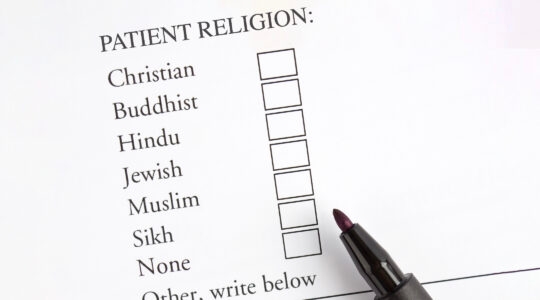Why do we pack up our suitcases, head to the airport and leave the familiar behind? Leisure and recreation are important, sure, but for most of us, travel is essential for the fresh perspective it offers — on our fellow humans, on Jewish communities throughout the world, and on cultures and lifestyles that may seem alien but that force us to reconsider our own points of view.
And an informed perspective is more valuable than ever. Civil unrest, economic upheaval and mass migrations are fast reshaping the world we know in the 21st century. It’s not always a comfortable world — as events from Ferguson to Donetsk have revealed — but it’s eminently worth exploring. Here, for 2015, are my top five destinations for Jewish travelers seeking novel points of view.
1. San Francisco. Eternally fascinating through generations of cultural upheaval, California’s jewel by the bay is once again awash in change: from one year to the next, it’s an entirely different city. If you haven’t been to San Francisco lately, you’ll be amazed by the energy that has transformed whole neighborhoods, most notably the Mission — now a mecca of artisanal eateries, sidewalk cafés and unconventional Jewish minyanim.
Down in the Financial District, lunch crowds flock to Shorty Goldstein’s for a Bay Area take on Jewish deli: homemade pastrami, mustard, pickles, rye and more. Young Jewish professionals feature significantly among the city’s influx tech workers — which includes Israeli newcomers to Silicon Valley, whose tech startups have close ties to Israel. Innovative and defiantly modern, these new Jewish arrivals are redefining Bay Area Jewish life on their own terms, which may be epitomized by the Kitchen, a Mission Jewish group that reimagines the synagogue with food trucks, progressive action and picnics in the park.
2. Russia. Like America and Israel, Russia can be a place that fascinates, captivates, and perplexes — and one that’s worth a closer look beyond the headlines. Now is the perfect time to take that look: as the Russian economy implodes amid sanctions and falling oil prices, the country is a less expensive destination for foreigners
In the buoyant, prosperous decade that preceded the crisis, Jewish life has undergone a high-profile (some would say improbable) revival. The country’s largest Jewish community center was unveiled in the city of Ufa; Chanukah displays went from underground to commonplace. Perhaps no institution mirrors the showy, defiant ambition of the Putin era like Moscow’s new Jewish Museum and Tolerance Center, a massive, multimedia center that opened in late 2012 as a kind of debut for Russia’s newly prominent Jewish presence.
3. Cuba. When a place has a “Keep Out” fence around it for five decades, it becomes irresistible. Americans have romanticized Cuba since the Eisenhower era — vintage Fords, rumba and all. So with the news last week that the U.S. will renew diplomatic relations with Cuba, Castro’s Caribbean refuge became the travel story of the year.
I am reluctant to add to the hype, especially given the reality on the ground for 2015. Tourism remains restricted, with travel to the island only possible through organized channels, and tourist infrastructure will take years to meet U.S. demand and standards.
But as we learned from the case of Alan Gross — the just-released American prisoner who had been working on communications technology with Cuban Jews, among others — the island’s proud Jewish community can benefit from the support of its American counterparts. Ethnic and religious minorities are always vulnerable during times of transition, especially when the host nation is reinventing its own identity. Cuban-Jewish missions will take on greater importance and — one hopes — aspire to a more ambitious agenda in a more open era.
4. Djerba, Tunisia. This pretty Tunisian island has long been a favored beach resort for Europeans. But for Americans, its stunning coastlines, historic Jewish community and colorful souks offer a sunny Mediterranean vacation at a budget price.
Along with turquoise waters and gorgeous beaches, Djerba boasts a rich Sephardic tradition stretching back hundreds of years. Amid the turmoil of recent years, the Jewish community has undergone a dramatic exodus. But approximately 1,000 carry on the rituals of religious life at Djerba’s Jewish institutions — most notably the lovely El Ghriba Synagogue, the oldest temple in North Africa, with its cerulean arches and intricate tile work.
As I write this, Tunisia is counting the ballots from its first free, democratic presidential election. An oasis of relative security and calm in a turbulent region, the country — situated halfway between Morocco and Egypt — offers a unique vantage point on this less-visited side of the Mediterranean.
5. Plzen, Czech Republic. If the name of Europe’s Capital of Culture 2015 looks unpronounceable to you, try saying “Pilsen,” the English translation. And if that rings a bell, it’s because Plzen is the home of pilsner — as in Pilsner Urquell, the beer that put Czech alcohol on the map.
Landmark breweries have been churning out pilsner in this West Bohemian industrial city since the mid-19th century, but they’ll be serving more than usual in 2015, when thousands of tourists will finally look past Prague (a mere 90-minute ride away) to this grittier but lively town of about 160,000.
In a region saturated with architectural gems and vintage edifices, Plzen stands out for its fin-de-siècle Great Synagogue, the second-largest in all of Europe and a masterpiece of the Moorish Revival style. The Great Synagogue, once the anchor of a proud prewar Jewish community, is now the centerpiece of a Jewish heritage that is a highlight of this year’s cultural showcase, with historical exhibits, concerts and lectures planned, including a yearlong cycle of circus troupes from around the world.
The New York Jewish Week brings you the stories behind the headlines, keeping you connected to Jewish life in New York. Help sustain the reporting you trust by donating today.




